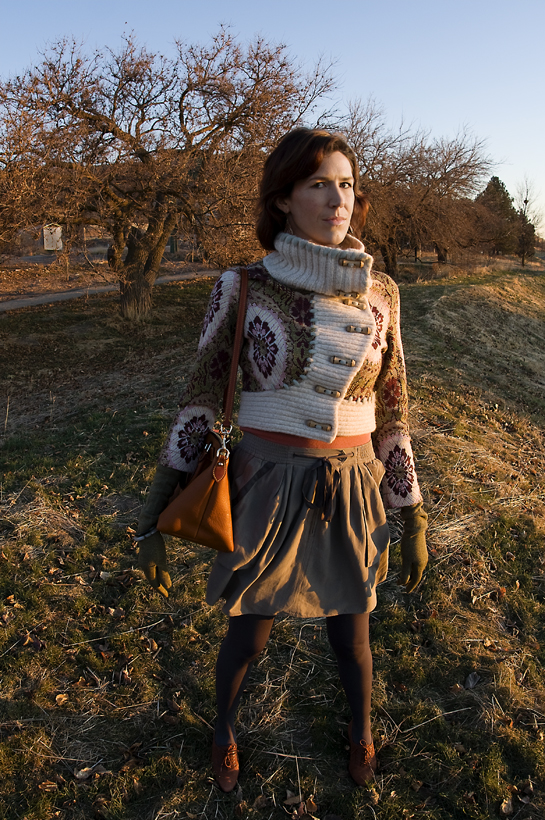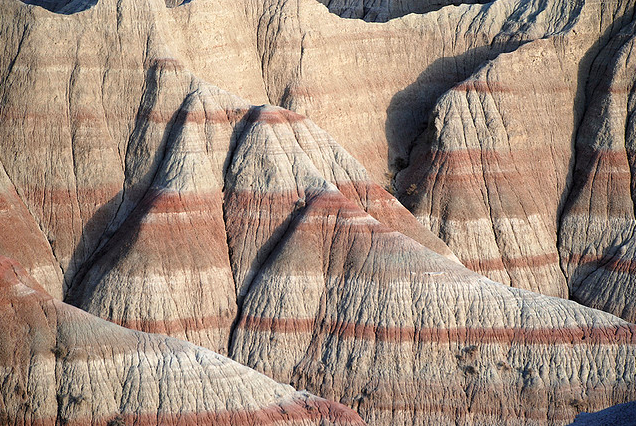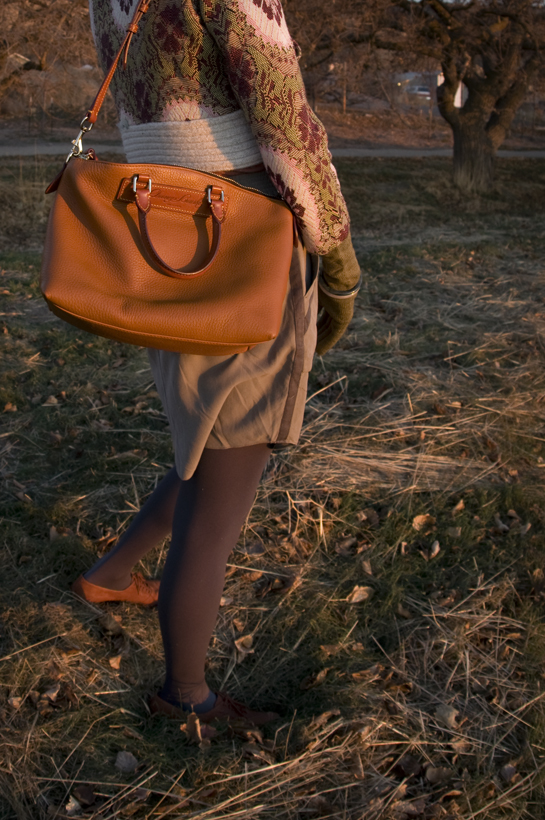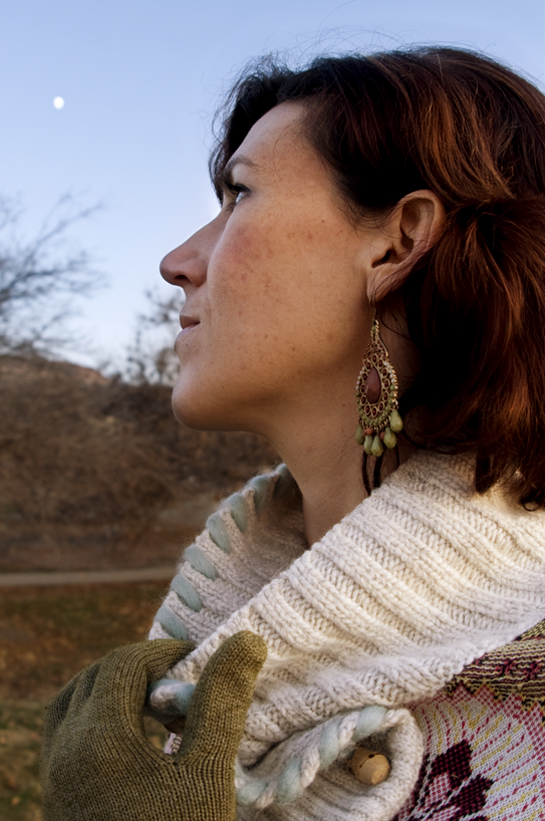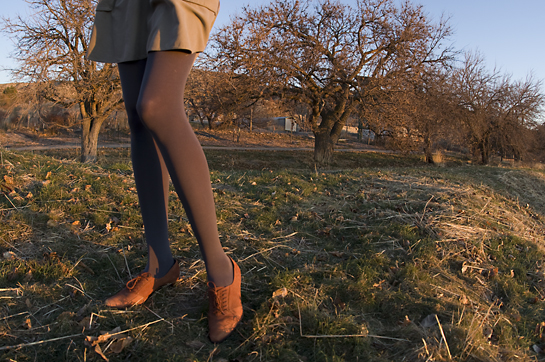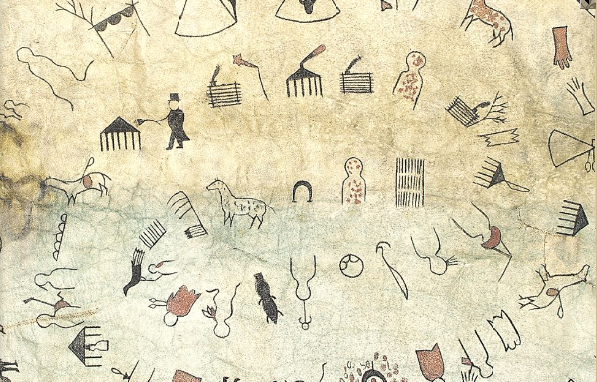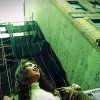I spent the weekend driving through the Badlands of South Dakota at 90 mph in a rented Chrysler and reading Joan Didion’s new memoir, Blue Nights. (Although not, pray, at the same time.) With its sharp, silhouetted hoodoos and arid skies with pinpoint stars, both the moonscape of the Badlands and Didion’s prose induce a similar hypnotic mood: an apprehension of losses yet to come, a hard-edged circumspection, and an imaginative flight from which one is reluctant to return.
Toggle sweater jacket: sleeping on snow (Anthropologie, Boise)
Skirt: Rebecca Taylor (Fancy Pants, Boise)
Salmon tank top: J. Crew (Boise)
Didion’s memoir was occasioned by the death of her daughter in 2005. As the poet Meghan O’Rourke observes in her Slate.com review, Blue Nights is not so much a grief memoir, but a regret memoir: “another thing altogether, a stranger, patchwork beast. It is written by an author with no hope of recovery, who has let go of her magical thinking.”
Badlands by Geof Theref
Handbag: Dooney & Bourke (Dillard’s, Boise)
Jade bracelets: Rangoon Airport (Burma)
I was touring the Badlands by night because I am foolish (a bad, bad place to break down) and because I had a meeting to make with tribal leaders on the Rosebud Indian Reservation, home to the Sicangu Lakota—the Upper Brulé Sioux Nation. A list of notable Lakota Sioux reads like a Who’s Who of heroes: Crazy Horse, Sitting Bull, Black Elk, Red Cloud, and the indomitable Billy Mills.
The reservation is a strange, patchwork beast. I met with highly educated and politically active young Lakota men and women. I also met up with a 61-year-old grandmother who looks about 95 and is caring for her 30-plus grandchildren in a graffiti-tagged house with nothing but plastic tarp covering its windows to keep out the frigid, Dakota winter.
Earrings: Lucia (Park Slope, Brooklyn)
Sage gloves: echo (Marshall’s)
Grey tights: Marks & Spencer (London)
Shoes: Nicole (yard sale)
In reviewing Blue Nights, O’Rourke notes that “writing of regret . . . cannot gesture toward redemption, or undo what has been done.” Amid rapidly changing conditions, there’s a spiritual immutability to the Badlands, the Lakota people, and the steady state of reverence for her daughter’s life that Didion evokes in Blue Nights. Part of letting go of my own magical thinking is admitting that I have regrets about my life; that I could have done things differently.
The Lakota kept winter counts, or pictorial calendars with one picture representing each year. The Lakota call them waniyetu wowapi. Waniyetu is the word for year, which is measured from first snowfall to first snowfall. Wowapi means anything that is marked on a flat surface and can be read or counted, such as a book, a letter, or a drawing.
Detail of 19th century Rosebud winter count (Lakota Winter Counts, Smithsonian Institution)
“For everything there is a season,” writes Joan Didion in Blue Nights. “Ecclesiastes, yes, but I think first of The Byrds, ‘Turn Turn Turn.'” If, like the Lakota, I had to choose one picture to embody this entire year it would be driving at night through the Badlands: I can see no farther afield than my headlights; strange, daunting formations surround me—and yet, I persevere.
Photos by Bethany Walter
Comments
